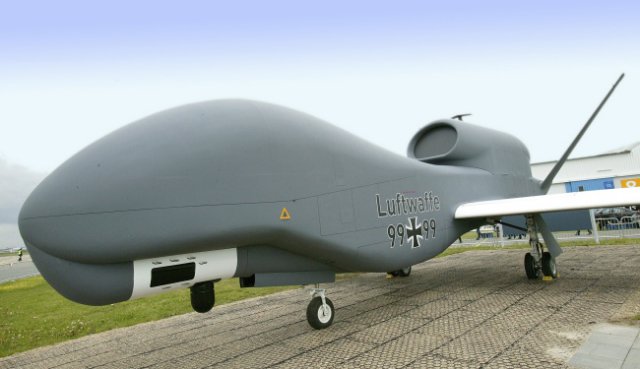A Northrop Grumman Corp spokesman said that his company was making “a lot of progress” in talks with the German government about the country’s stalled purchase of four Euro Hawk UAS, and what is needed to certify their airworthiness.
“We’re continuing to try to work with the Germans to find a solution,” Tom Vice, President of Northrop’s Aerospace Systems Division, told reporters. “We’re continuing to have discussions. We’re making a lot of progress.”
Germany backed away in May from its 1.2 billion euro plan to buy four more Euro Hawk high-altitude reconnaissance UAS, saying that meeting the standards required to win aviation approval would cost 500 million to 600 million euros.
The German armed forces have one prototype Euro Hawk, which is based on the Global Hawk unmanned aircraft that Northrop builds for the U.S. Air Force, and were considering whether to purchase an additional four aircraft, which are made by Northrop and European aerospace company EADS.
Janis Pamiljans, Vice-President and General Manager of Northrop’s unmanned systems division, told German lawmakers last month the original plan for the Euro Hawk purchase was to take advantage of existing U.S. airworthiness efforts, but German officials later changed their requirements.
To aid the process, she said Northrop provided over 4,000 technical documents, sent engineers to a German air base to provide German authorities with detailed insight into the system and opened the Euro Hawk testing activities to German certification authorities.
Northrop officials say they remain convinced that Euro Hawk would meet the German government’s needs, despite Berlin’s change of heart, and argue that starting over with another platform would result in big cost increases and schedule delays.
Pamiljans said Northrop believed the certification requirements could be completed for 160 million to 193 million euros, far less than the estimates provided by some German government officials.
On Tuesday, Vice said Germany’s prototype Euro Hawk was continuing to prove its technical capabilities and completed a flight of over 25 hours last week, one of the longest unmanned flights over European air space.
“The capability matches their needs and the programme is doing extremely well,” Vice said.
Vice said Northrop was continuing aggressive efforts to reduce the cost per flying hour of the U.S. version of the plane and had already cut that cost significantly.

